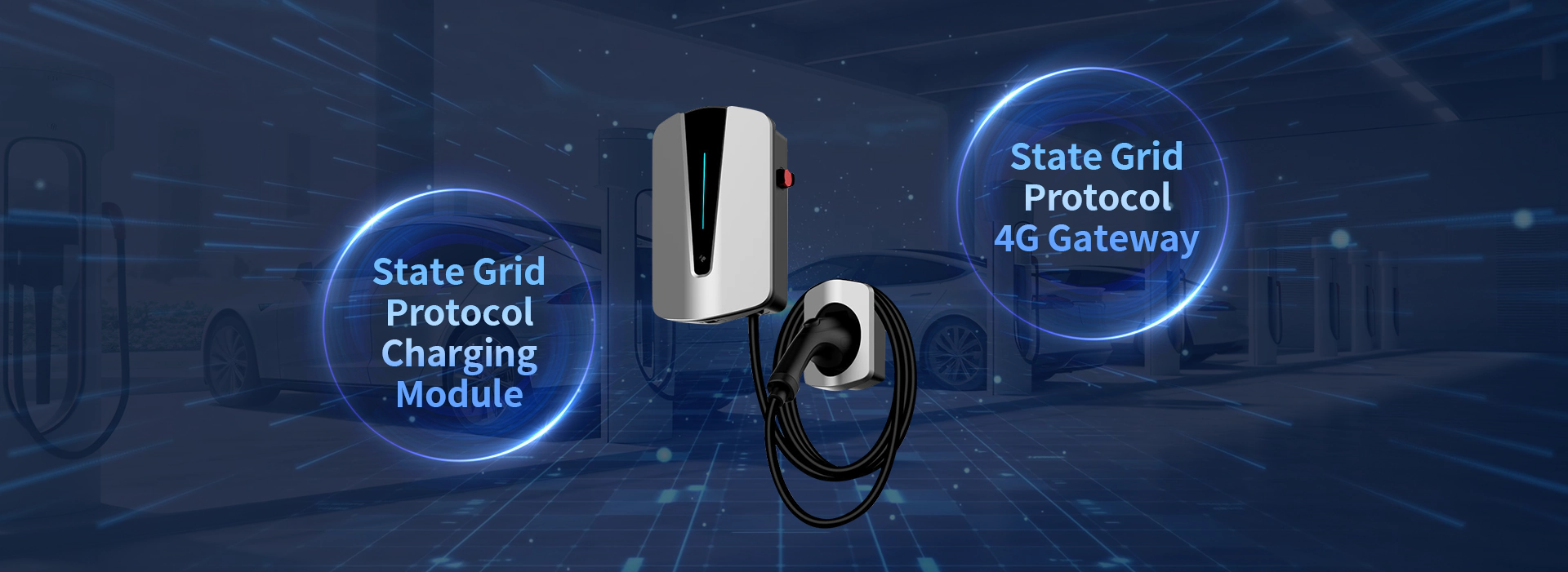State Grid protocol charging module and 4G gateway
As electric vehicle (EV) charging infrastructure rapidly expands, efficiently and economically connecting to the State Grid platform has become a key challenge for charging station operators. Among the various technical solutions, the Charging Module State Grid Protocol and the State Grid Protocol 4G Gateway are two common options. Although the Charging Module State Grid Protocol is powerful, its high cost deters many charging station companies. On the other hand, the State Grid Protocol 4G Gateway, with its flexibility, low cost, and quick deployment advantages, has become the preferred solution for an increasing number of operators.

▶ 1. Functional Positioning
Charging Module State Grid Protocol:
- The charging module is the core component of a charging station, responsible for power conversion and communication with the vehicle’s Battery Management System (BMS). It communicates with the State Grid platform through protocols like GB/T 27930, ensuring compatibility and efficiency during the charging process.
- This module is integrated within the charging station and directly participates in the charging process, using standardized protocols to communicate with the State Grid backend.
State Grid Protocol 4G Gateway:
- The 4G gateway is a communication device primarily used to connect charging stations to the State Grid’s backend management system. It transmits data via 4G networks, Ethernet, or Wi-Fi, ensuring smooth data exchange between the charging station and the backend system.
- The gateway does not directly participate in the actual charging process but serves as a communication bridge, helping non-standard devices quickly connect to the State Grid platform.
▶ 2. Application Scenarios
Charging Module State Grid Protocol:
- Suitable for charging stations that already comply with State Grid standards. These modules directly participate in the charging process and communicate with the State Grid platform in real-time. Such devices must strictly adhere to national standards like GB/T 27930 to ensure compatibility with the State Grid system.
State Grid Protocol 4G Gateway:
- Mainly used when existing hardware does not support State Grid protocols. By installing a 4G gateway, quick integration can be achieved. It is ideal for scenarios requiring remote monitoring, data transmission, and management, especially in remote areas or places where wiring is inconvenient.
▶ 3. Integration Method
Charging Module State Grid Protocol:
- Integrated within the charging station itself, it communicates directly with vehicles and the State Grid backend through interfaces such as CAN bus or RS232. These modules often require hardware and firmware updates to support the latest State Grid protocols.
State Grid Protocol 4G Gateway:
- Does not require large-scale hardware modifications. Simply connecting via a SIM card or Ethernet cable allows integration. This method is more flexible and suitable for quickly deploying or upgrading existing non-standard equipment.
▶ 4. Data Processing
Charging Module State Grid Protocol:
- Responsible for processing data related to the vehicle’s BMS, such as real-time monitoring of charging status and adjusting output power. This data is then transmitted to the State Grid platform for unified management.
State Grid Protocol 4G Gateway:
- The gateway mainly handles data transmission tasks by encrypting and sending data from various devices to the State Grid backend. It supports high-capacity data transmission and ensures stable connectivity in various network environments.
▶ 5. Cost Savings
Higher Cost of Charging Module State Grid Protocol:
- Since the charging module is one of the core components, its manufacturing cost is relatively high. On average, a module costs thousands of yuan due to its complex power conversion technology, digital control systems, and stringent safety standards.
Lower Cost of State Grid Protocol 4G Gateway:
- In contrast, the State Grid Protocol 4G Gateway is a communication auxiliary device with relatively lower costs. This device can be quickly integrated without large-scale hardware modifications, significantly reducing initial investment costs when upgrading existing non-standard equipment.
▶ Conclusion
In summary, while the Charging Module State Grid Protocol offers more complex functionality suited for large projects, its high cost is a significant consideration for many operators. In contrast, the State Grid Protocol 4G Gateway, with its low cost, quick deployment capabilities, and minimal hardware modification requirements, has become a more attractive option. For small-scale projects or retrofits that aim to quickly connect to the State Grid platform while minimizing initial investment costs, using a 4G gateway is undoubtedly a more economical and efficient solution. Choosing a 4G gateway not only reduces operating costs but also provides greater flexibility for future expansion.
